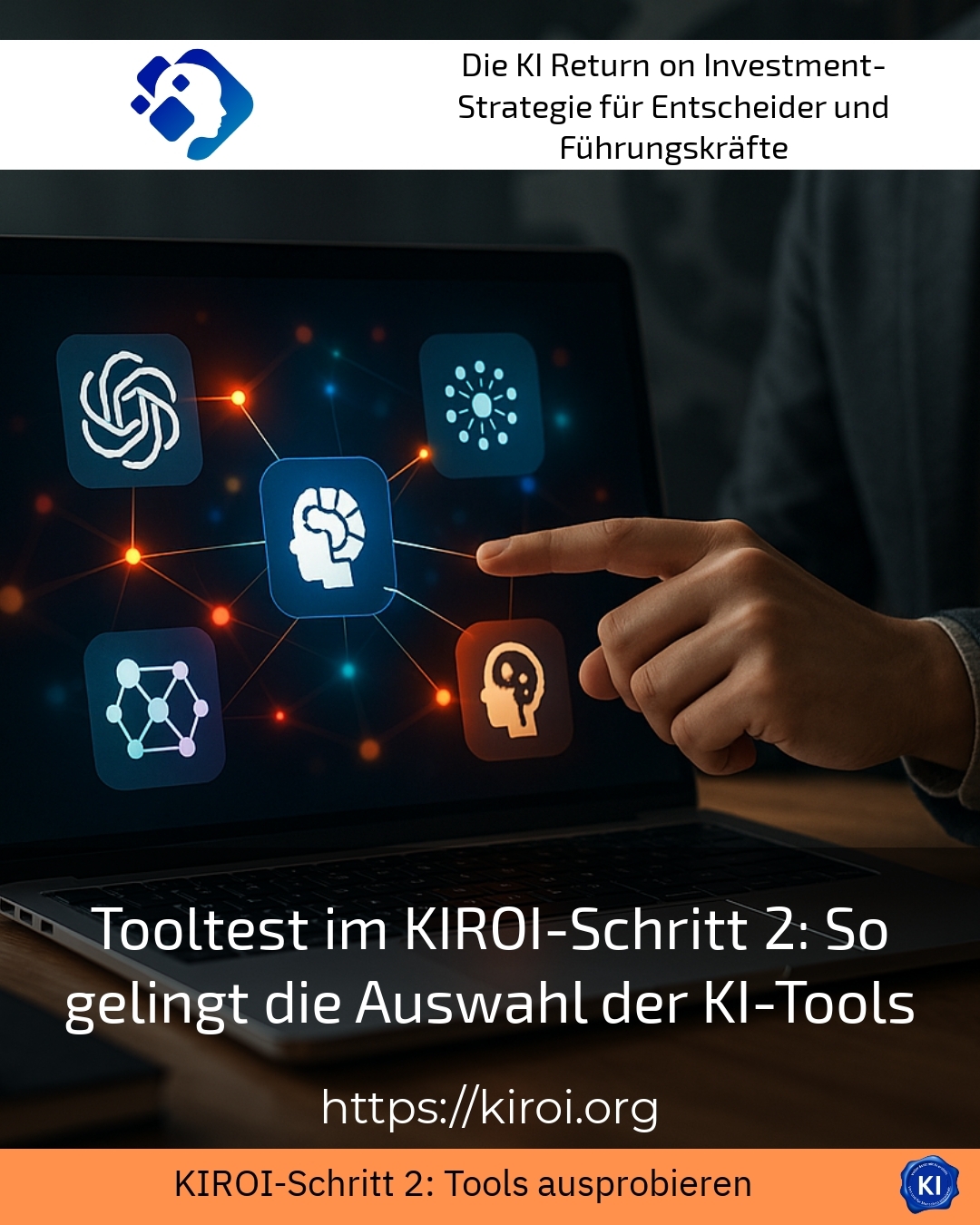Many companies today face the challenge of finding the right tools for their digital projects. A tool test in KIROI step 2 is the decisive step in identifying the right solution. Many managers report that they lose a lot of time and energy without clear criteria and a structured approach. The tool test helps to reduce uncertainty and select the right tools in a targeted manner. It is not an end in itself, but a central building block for sustainable digitalisation projects.
What makes a tool test so valuable?
A tool test always begins with a precise analysis of the requirements. Companies first define specific use cases and determine which functions they really need. This is the only way to narrow down the variety of offers in a meaningful way. Many clients come to us because they are overwhelmed by the choice and unsure whether the tools really fit their processes.
A structured tool test thrives on transparency and communication. It is important to involve all relevant stakeholders and systematically collect feedback. This creates a solid basis for investment decisions. A tool test is not a one-off event, but develops into a continuous optimisation process.
Practical examples show how versatile a tool test can be. In financial analysis, tools help to analyse large amounts of data and create meaningful forecasts. In marketing, they can generate personalised content that is precisely tailored to the target group. Significant efficiency gains can also be seen in process automation, for example in the processing of customer enquiries.
Tool test: Practical examples from various industries
In the field of data analysis, companies use tools to perform predictive analytics. They analyse historical data and create forecasts for future developments. A tool test helps to find the right solution that can be seamlessly integrated into existing systems.
In marketing, companies use tools for text generation and content creation. They automatically create blog articles, newsletters and social media posts. A tool test shows which solution delivers the best results and how easy it is to use.
In recruiting, companies use tools to analyse applications and identify suitable candidates. A tool test helps to find the right software that adapts to individual requirements and guarantees data protection.
Tool test: The most important criteria
An excellent tool should be characterised by user-friendliness and high performance. It is important that it is intuitive to use and does not require extensive training. Adaptability to individual requirements is another decisive factor. Especially in dynamic environments, tools should be flexible enough to fit seamlessly into existing processes.
Data security and technical support are essential. Tools often process sensitive information, which is why high security standards are essential. Reliable technical support ensures that help is available quickly in the event of problems.
A tool test helps to systematically check these criteria and find the right solution. Many companies report that the effectiveness of a tool increases significantly with regular use and targeted customisation.
Tool test: Best practices from the field
A medium-sized company from the technical services sector showed that a tool focussing on competitive analysis and keyword gap analysis offers considerable added value. The company was able to improve its position against competitors in a targeted manner and identify gaps in its own strategy. The tool test provided decisive impetus for the development of the digital strategy and led to marketing activities becoming measurably more efficient.
Another example comes from the field of process automation. A company used a tool to automate repetitive tasks. The tool test showed that the solution could be seamlessly integrated into the existing systems and that employees were able to familiarise themselves with it quickly. The efficiency of the processes increased significantly.
A third example comes from the field of image and video processing. A company used a tool to carry out quality checks. The tool test helped to find the right solution that was customised to the individual requirements and guaranteed data protection.
My analysis
The tool test is not an end in itself, but a central building block for sustainable digitalisation projects. It helps to minimise investment risks, optimise processes and promote innovation in a targeted manner. Practical experience shows this: Those who take tool testing seriously and approach it in a structured way will benefit from better results and greater acceptance within the team in the long term.
Further links from the text above:
KIROI step 2: Unleash AI potential with the tool test
Tool test for decision-makers: successfully mastering KIROI step 2
For more information and if you have any questions, please contact Contact us or read more blog posts on the topic Artificial intelligence here.















